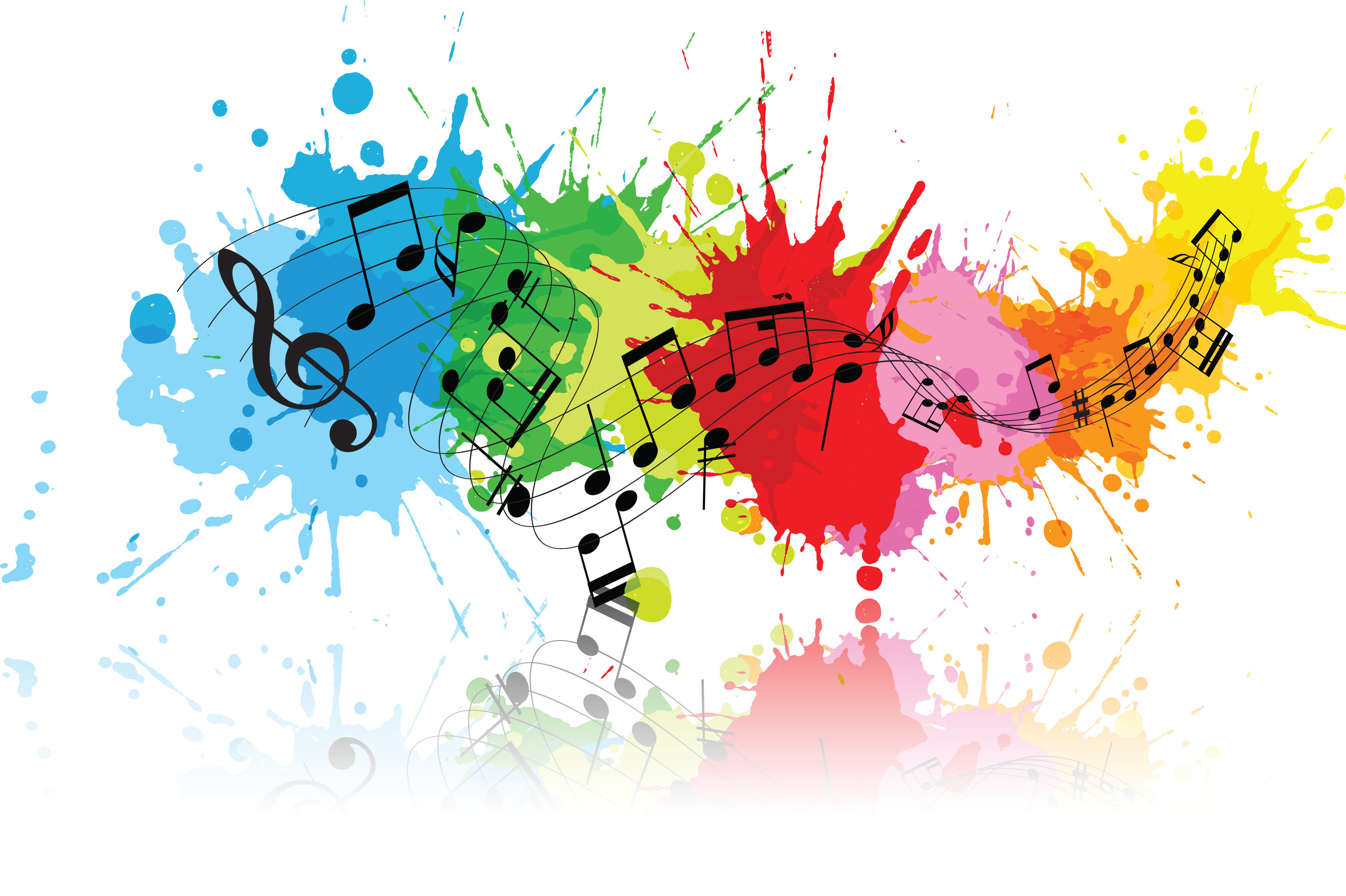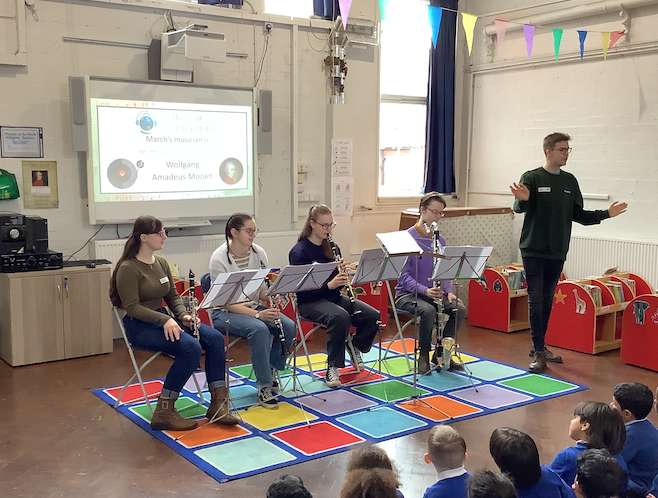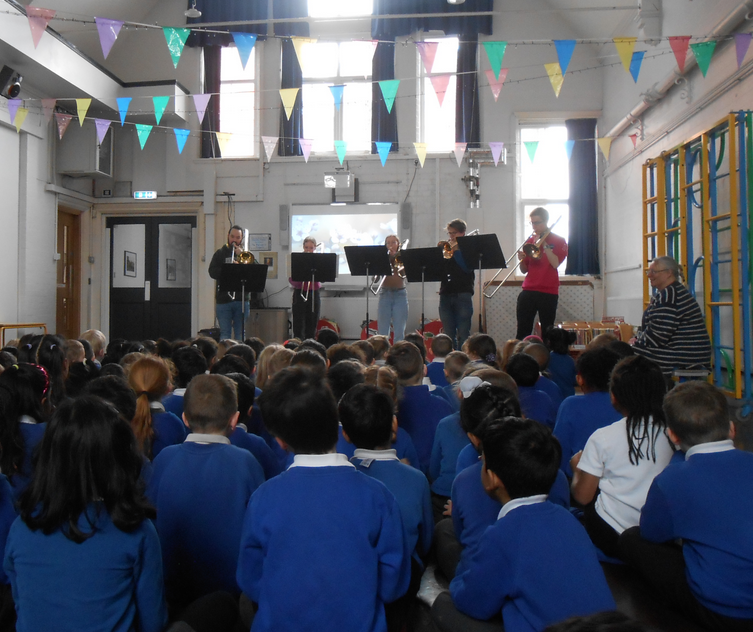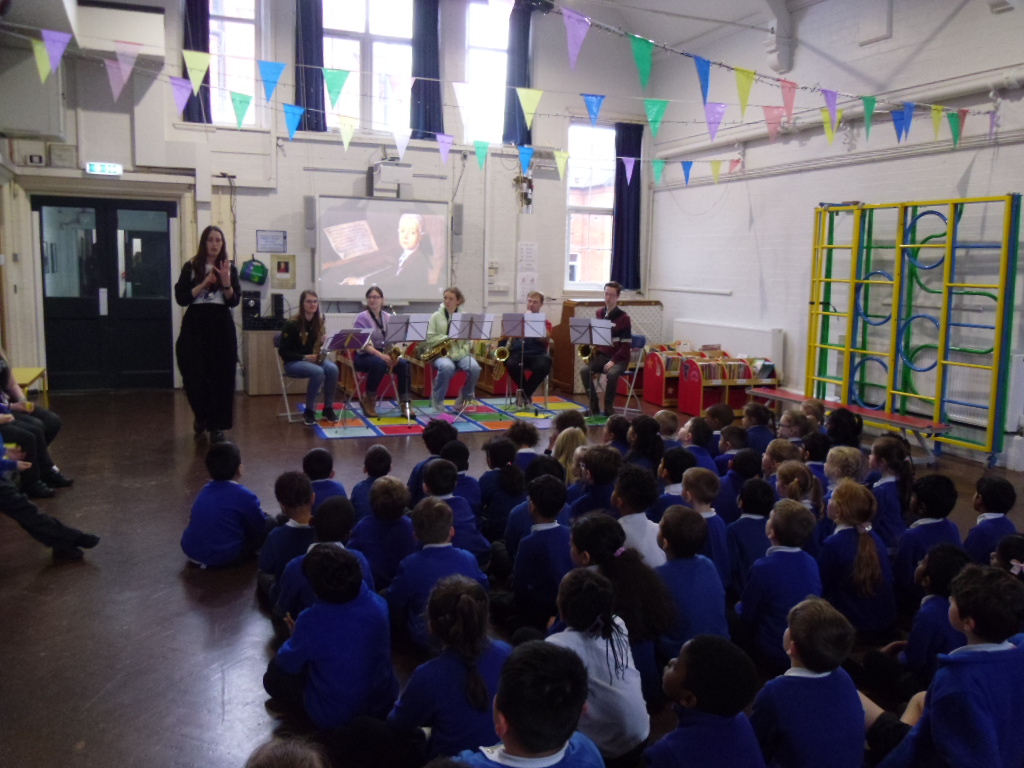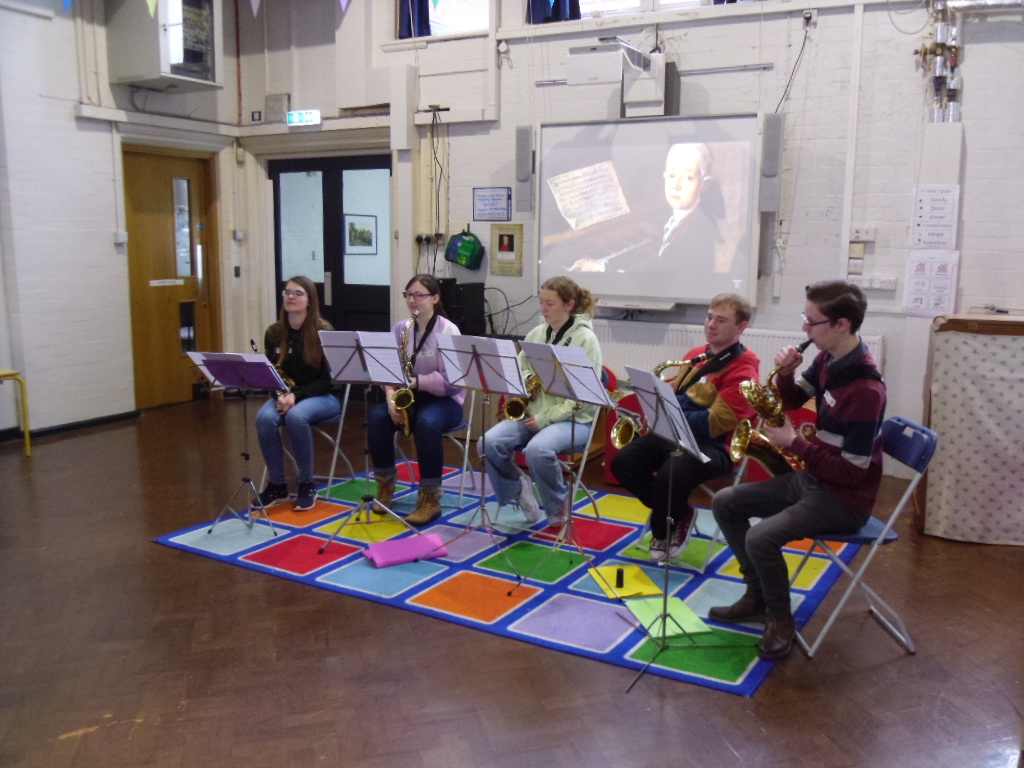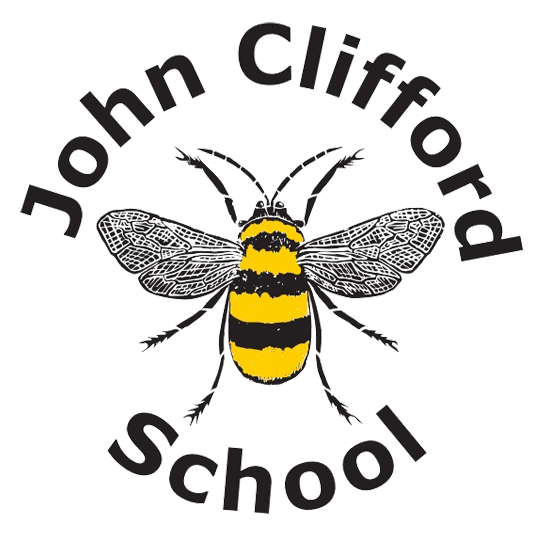Why do we teach music at John Clifford School?
LISTEN TO THE KS1 CHOIR SING BABY BALUGA (go to the bottom of the page for the link)
MUSIC AT JOHN CLIFFORD SCHOOL
Enjoyment of music:
The intent of our music curriculum is to make music an enjoyable learning experience through which children can develop their musical tastes, vocabulary, understanding and practical skills.
Participation:
We encourage children to participate in and engage with a wide variety of musical experiences through which we aim to build self-confidence and develop a life-long love of music and singing.
Potential:
We aim to achieve this by delivering high-quality teaching and learning opportunities that enables all children to achieve their potential, through developing knowledge, skills and competences in line with our Equality curriculum reflecting the diverse backgrounds and abilities of our children.
How do we teach music at John Clifford?
Singing at the heart:
We make music an enjoyable learning experience with singing at the heart of everything we do. We also teach children to play pitched and unpitched instruments confidently. Our teaching focuses on developing the children’s ability to sing/play in tune and with other people. Through singing songs, children learn about the structure and organisation of music. We also teach them to listen to and appreciate different forms of music linked to the Model Music Curriculum.
Sing-up:
As a school we use the Sing-up Music scheme of work for each year group from Nursery to Year 6 which provides a complete and progressive library of resources that meets the requirements of the Statutory Framework for the Early Years Foundation Stage (Expressive Arts), the National Curriculum for music and suggested approaches of the Model Music Curriculum (Singing, Listening, Composing, Performance/Instrumental Performance).
Progression snapshot videos are collected each term in each year group, to provide evidence of how the children are progressing as they move through the school and will present an opportunity to monitor teaching and learning. The National Plan for Music Education suggests an hour of music in KS1 and KS2 and alongside lessons the children will have other musical opportunities including listening to a range of music genres, Singing Assemblies and singing in other curriculum areas.
Instruments:
All children are actively encouraged and given the opportunity to learn to play a musical instrument, from standard classroom instruments to individual instrumental lessons with the visiting peripatetic staff (drumming, guitar, violin and piano). Musical opportunities in school include class music lessons, KS singing assemblies, two school choirs (KS1 and KS2), and visiting musicians. Children also have the opportunity to perform in concerts and shows.
How is your child's learning in music supported at school?
Throughout the child’s journey at John Clifford School, their musical skills and understanding are built year on year, from singing nursery rhymes and action songs from memory and performing simple rhythm patterns on tuned and untuned percussion instruments in Early Years, progressing their skills and understanding in KS1 where they also experience learning to play the ocarina, to further developing their skills and knowledge of the subject in KS2. The children have the opportunity to access whole class music tuition in YR4 provided by the Music Hub (wind instrument), and by YR6 they have the ability to read and follow a simple musical or graphical score. Throughout this the child’s enjoyment of music is a key element, running alongside the ‘taught’ musical skills and objectives and it will also help to develop an understanding of culture and history, both in relation to students individually, as well as ethnicities from across the world.
This will be achieved by providing;
- Classroom instrumental teaching (planned opportunities to play age-appropriate music instruments i.e. ocarinas, glockenspiels, ukuleles and recorders)
- Visiting music teachers (opportunities for children to take part in paid instrumental teaching i.e. piano, violin, guitar, drumming)
- Links with external music organisations (Nottingham Music Hub whole-class instrumental teaching).
- Links with University of Nottingham student-led society (Blowsoc)
- Choir/ensemble in KS1 and KS2
- Whole school singing assemblies.
- Performance opportunities (FS/KS1 -Nativity, KS2 –Christmas concert, provide a range of performance opportunities for children in school and beyond for the parents/carers and the community to enjoy.
- School orchestra (long term objective with external support (WHP Trust/NMH) links with classroom instrumental teaching)
- Musical engagement with feeder secondary schools
- Family of School Singing Festival
- Use of music technology as part of the Music & Computing curriculum – EYFS, KS1 (use of Chrome Music Lab), KS2 (use of MicroBits)
- Support for SEND children, so they can access the music curriculum through differentiated resources and appropriate instruments so that they can experience success and feel part of the musical experience.
We focus on developing the skills, knowledge and understanding that children need to become confident performers, composers, and listeners. Our curriculum introduces children to music from all around the world and across generations, teaching children to respect and appreciate the music of all traditions and communities. The children also understand how to further develop their skills should they wish to.
